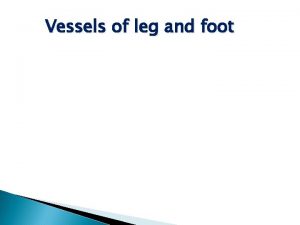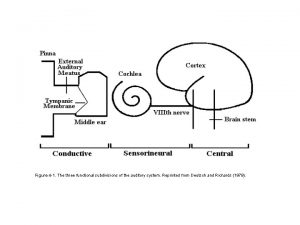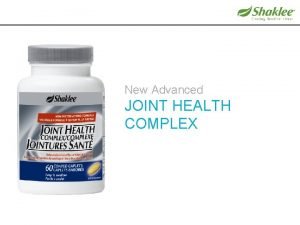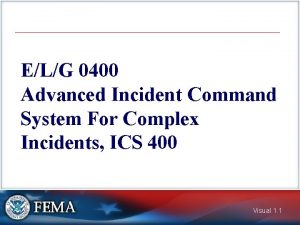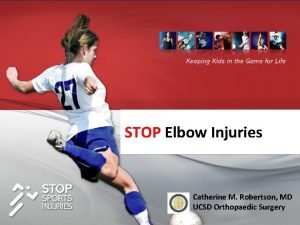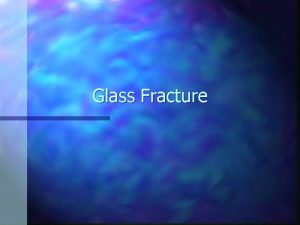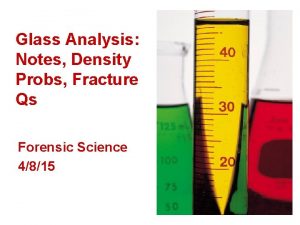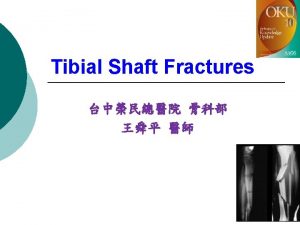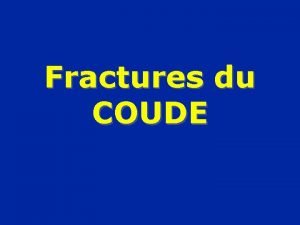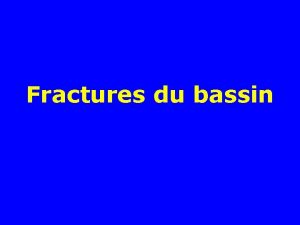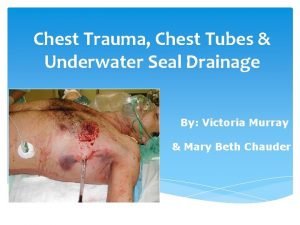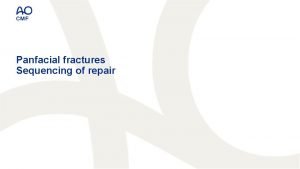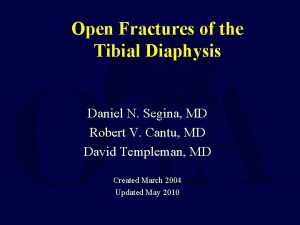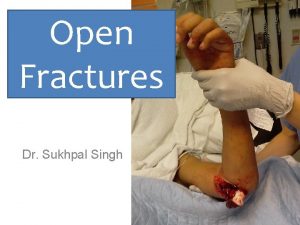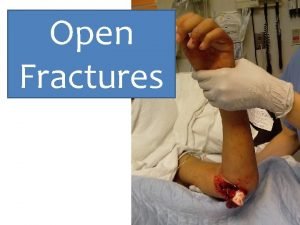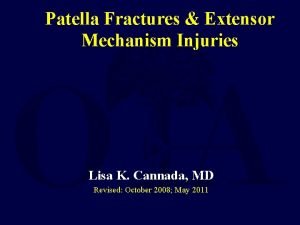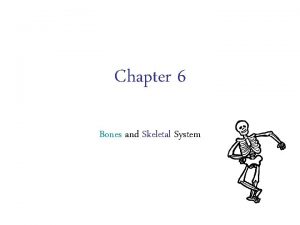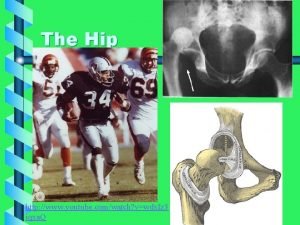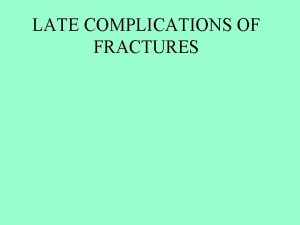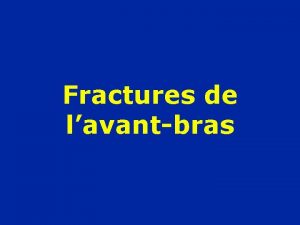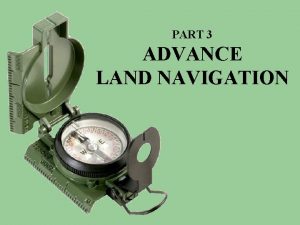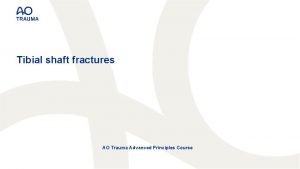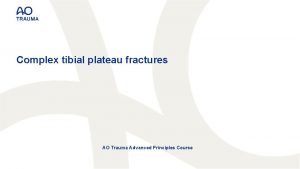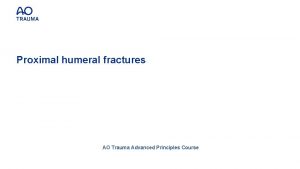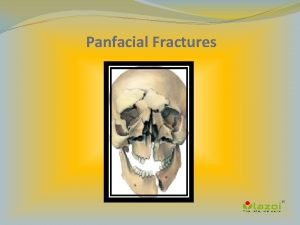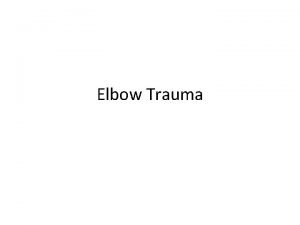Complex malleolar fractures AO Trauma Advanced Principles Course











































- Slides: 43

Complex malleolar fractures AO Trauma Advanced Principles Course

Learning objectives • Classify complex malleolar fractures and develop a treatment plan • Recognize typical concomitant soft-tissue injury • Apply reduction principles and choose appropriate implants for fixation • Explore key outcome publications

Malleolar fractures • Indirect forces • Shearing and tensile through talus • Plafond intact

Pilon fractures • Direct (impaction) forces • Plafond fractured • Prognostically significant

Malleolar fractures • Most common lower extremity fractures • Significant changes in management since 1970 s • Controversies remain • Complications still occur

6

44 A 2 Infrasyndesmotic fibula with medial malleolar fracture 44 A 3 Infrasyndesmotic fibula with posteromedial fracture 7

44 B Transsyndesmotic fracture 8

44 C Suprasyndesmotic fibula injury 9

Do all ankle fractures do well? • Minimum of 10 years of follow-ups • 36% moderate or severe arthrosis

What are we doing wrong?

Changing trends • Length of the fibula and rotation are important • Early range of movement • Anatomical reduction

Importance of the fibula • Length of the fibula is critical • Proximal migration (shortening) • Lateral talar displacement • Inaccurate reduction of distal tibia/fibula joint • Ankle incongruity—arthrosis

Importance of early range of movement • Is your fixation stable? • Do you trust your patient? • Why not move early?

Importance of anatomical reduction • Intraarticular fractures • No different to any other joint • Secondary arthrosis related to quality of reduction • 1 mm talar displacement—reduction of tibiotalar contact surface by 46%

Early management • Reduce dislocation immediately • Beware threatened skin, especially medially • Splint without delay • Immediate or delayed open reduction internal fixation (ORIF) • Always fix unstable injuries

Early management • Threatened skin

Weber A—fibula fixation “Hook” plate • Modified 1/3 tubular plate • Good distal fixation • Suitable for low fractures

Weber A—medial malleolar fixation • Vertical shear injury • Always inspect joint • Restore and bone graft marginal impaction • Screws perpendicular to fracture plane • NOT from tip—malreduction • Buttress plate adds stability (antiglide) • 3. 5 screws better than “malleolar”


Marginal impaction

Marginal impaction

Marginal impaction

Vertical medial malleolar fracture

Management—Weber B • 60– 80% of ankle fractures • Be careful with superficial peroneal nerve (SPN) • Fibular fixation posterior or lateral? • Begin ORIF with fibula • Medial malleolar fixation—two 40 mm cancellous 4. 0 screws

Superficial peroneal nerve • • Injury to SPN common Variable course It may be lower than you think! Posterolateral incision

SPN over low Weber B fracture

Weber B—posterior fibular fixation • Posterolateral plate • Not subcutaneous • Biomechanically sound—antiglide • Lag screw(s) through the plate • No anterior stripping • Joint penetration less likely • Distal bicortical fixation

Weber B—when to fix? • Literature suggests: B-type fracture with no medial injury: ORIF = nonoperative • Surgery is NOT superior; maybe associated with more complications Mittal R, Harris IA, Adie S, Naylor JM; CROSSBAT Study Group. Surgery for Type B Ankle Fracture Treatment: a Combined Randomised and Observational Study (CROSSBAT). BMJ Open. 2017 Mar 27; 7(3)

Weber B—when to fix? • But many need ORIF • Significant instability • Significant medial or deltoid ligament injury and instability • Displaced medial malleolar fracture • Talar shift on x-ray Toth MJ, Yoon RS, Liporace FA, Koval KJ. : What's new in ankle fractures. Injury. 2017 Oct; 48(10): 2035 -2041.

Management—Weber C • Syndesmosis disrupted • Syndesmotic injury ligamentous or bony • Fibula—restoration of length critical • Fibular fracture may be high • Be careful with SPN • Accurate reduction and fixation of syndesmosis is paramount • Medial malleolar fixation—as for Weber B

Weber C—fibular fixation • Low fractures—anatomical reduction • High fractures (maisonneuve) • Fibular fixation not necessary if length is OK

Weber C—syndesmotic fixation • No lag screw—position • Reduce prior to insertion • 3 or 4 cortices • 3. 5 or 4. 0 cortical • Posterolateral to anteromedial • 2– 3 cm above ankle—parallel • Removal at 12 weeks or more

Syndesmotic reduction

Weber C—syndesmosis controversies • When is fixation necessary? • Best method—screw fixation or direct ligament repair? • Type of screw fixation? • Time to screw removal (syndesmosis healing)? • Time to weight bearing?

Screw removal?

Revision syndesmosis stabilization

Management—posterior tibial lip • Not true “malleolus” • Usually attached to posteroinferior tibiofibular ligament (PITFL) • Reduction with ORIF of fibula • Most authors—less than 20% ORIF • Approach PM or PL • AP or PA lag screws or posterior antiglide plate


Osteoporotic fractures • Treat as if “normal” • Allow the implants to do the work • Aim: prevent progressive deformity and arthrosis • Better than arthrodesis • If fibula is osteoporotic and difficult to fix • Pass screws into tibia for added fixation and stability • Antiglide plate

Osteoporotic fractures—fibula pro-tibia technique

Neuropathic ankle fractures • Need more aggressive treatment • Double nonweight bearing • Double fixation • Double immobilization • Careful attention to soft tissues

Take-home messages • Not all ankle fractures are straightforward • Recognize more complex injuries • Apply sound fixation principles • Length of the fibula and rotation are critical • Restore anatomy • Recognize high-risk patients
 Posterior tibial artery
Posterior tibial artery Parts of tympanic membrane
Parts of tympanic membrane Joint health complex
Joint health complex Characteristics of advanced cities
Characteristics of advanced cities Complex incident
Complex incident Olecranon bursitis irving
Olecranon bursitis irving Concentric fracture glass
Concentric fracture glass Concentric fractures
Concentric fractures Gustilo anderson classification antibiotics
Gustilo anderson classification antibiotics Fracture supracondylienne coude classification
Fracture supracondylienne coude classification Fracture de voilemier
Fracture de voilemier Bubbles in chest tube
Bubbles in chest tube Bone cancer fractures
Bone cancer fractures Panfacial fractures sequencing
Panfacial fractures sequencing Classification of open fractures
Classification of open fractures Dr sukhpal singh
Dr sukhpal singh Open fracture treatment
Open fracture treatment Types of fractures with pictures
Types of fractures with pictures Canthatomy
Canthatomy Tubular shaft of a long bone
Tubular shaft of a long bone Acetabular fractures
Acetabular fractures Triradiate cartilage x ray
Triradiate cartilage x ray Types of glass fractures
Types of glass fractures Slidetodoc.com
Slidetodoc.com Pronation main
Pronation main Danis and weber classification
Danis and weber classification Memory forensics training
Memory forensics training Basic instructor course #1014
Basic instructor course #1014 Degrence
Degrence Onedrive uniovi
Onedrive uniovi Tcole advanced instructor course
Tcole advanced instructor course Tcole advanced instructor course
Tcole advanced instructor course Ao advanced course
Ao advanced course Pauline and bruno have a big argument
Pauline and bruno have a big argument Ghon complex
Ghon complex Quiz on compound sentences
Quiz on compound sentences Electra complex vs oedipus complex
Electra complex vs oedipus complex Difference between oedipus complex and electra complex
Difference between oedipus complex and electra complex Mbti percentages
Mbti percentages Disadvantages of cavity wall
Disadvantages of cavity wall Course title and course number
Course title and course number Course interne moyenne externe
Course interne moyenne externe Poller screw ao
Poller screw ao Advanced principles of fracture management
Advanced principles of fracture management
